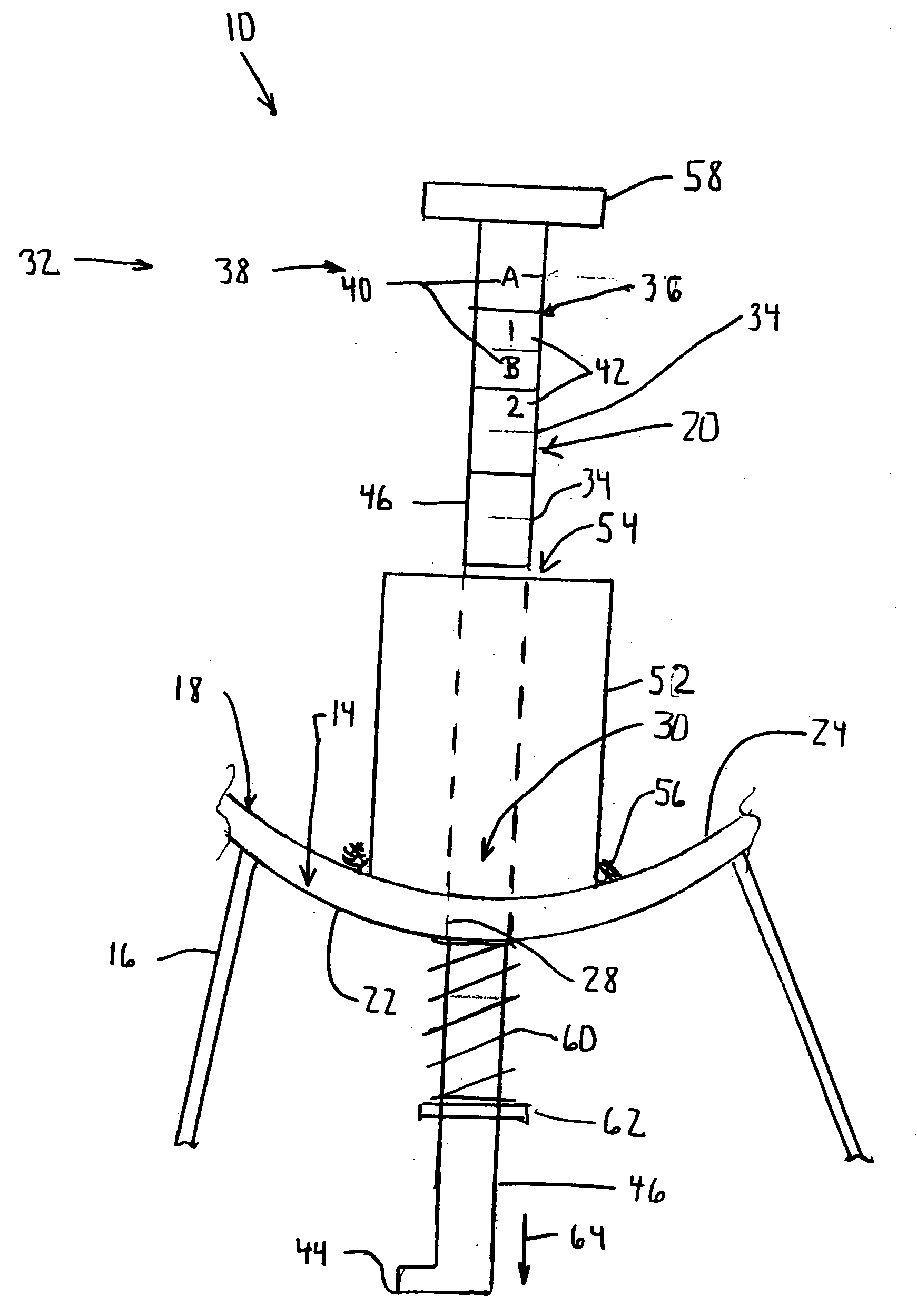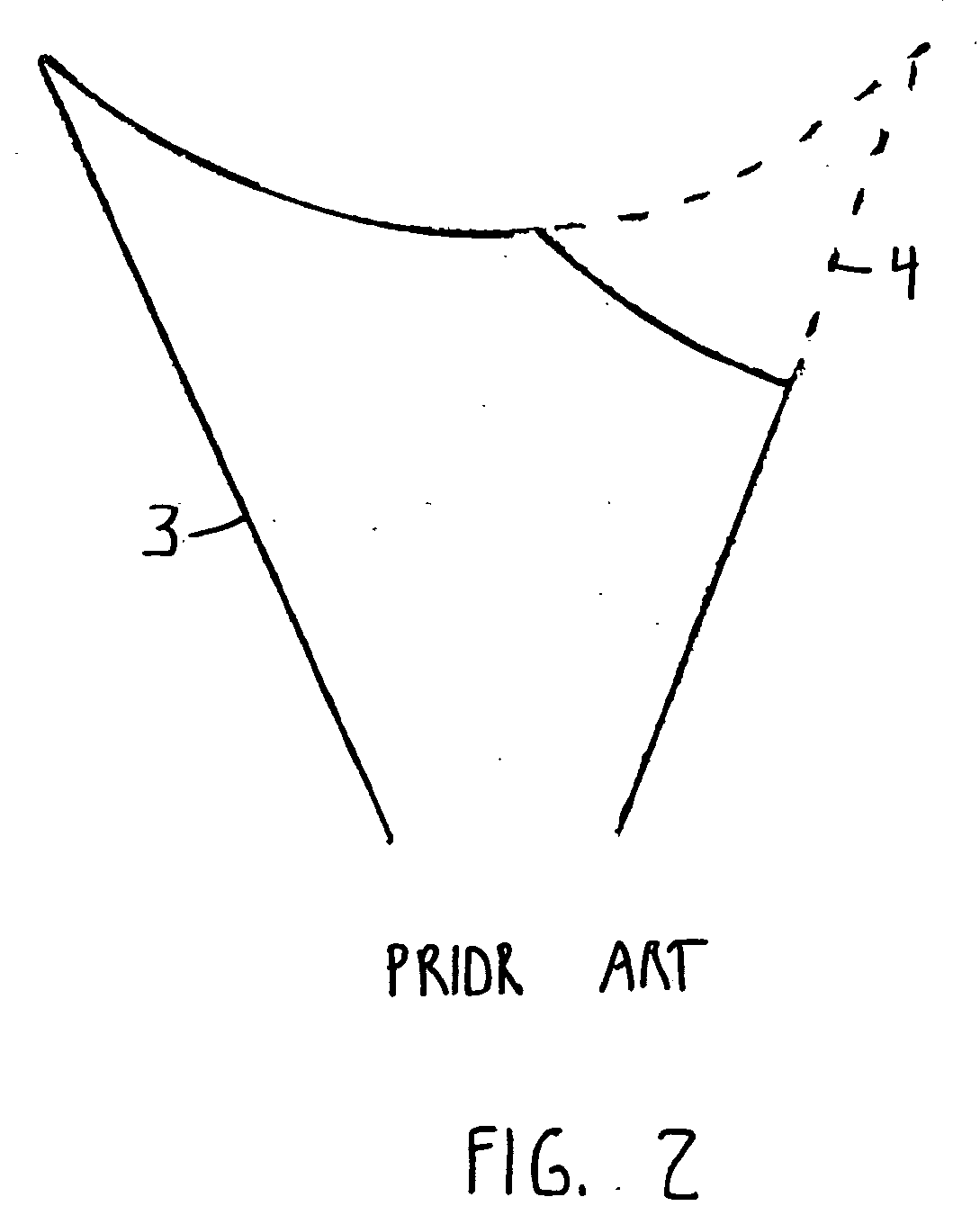Glenoid instrumentation and associated method
- Summary
- Abstract
- Description
- Claims
- Application Information
AI Technical Summary
Benefits of technology
Problems solved by technology
Method used
Image
Examples
Embodiment Construction
[0055] Embodiments of the present invention and the advantages thereof are best understood by referring to the following descriptions and drawings, wherein like numerals are used for like and corresponding parts of the drawings.
[0056] According to the present invention and referring now to FIG. 7 instrument 10 according to the present invention is shown. The instrument 10 is utilized for measuring a defect 12 as shown in phantom in a glenoid fossa 14 of a scapula 16. The instrument 10 includes a member 18 for contact with the glenoid fossa 14. The instrument 10 further includes a probe 20 moveably associated with the member 18. The probe 20 is operably associated with the defect 12 for measuring the defect 12 in the scapula 16.
[0057] As shown in FIG. 7 the member 18 may include a convex surface 22 for contact with glenoid fossa 14. For simplicity as shown in FIG. 7 the member 18 may be in the form of a curved plate having an opposed surface 24 opposed to the convex surface 22. The...
PUM
 Login to View More
Login to View More Abstract
Description
Claims
Application Information
 Login to View More
Login to View More - R&D
- Intellectual Property
- Life Sciences
- Materials
- Tech Scout
- Unparalleled Data Quality
- Higher Quality Content
- 60% Fewer Hallucinations
Browse by: Latest US Patents, China's latest patents, Technical Efficacy Thesaurus, Application Domain, Technology Topic, Popular Technical Reports.
© 2025 PatSnap. All rights reserved.Legal|Privacy policy|Modern Slavery Act Transparency Statement|Sitemap|About US| Contact US: help@patsnap.com



